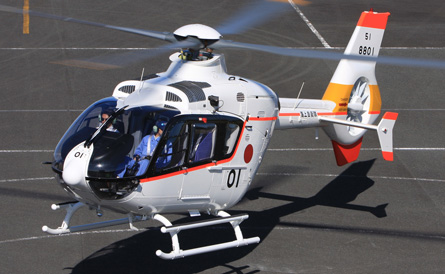The Japan Maritime Self Defence Force (MSDF) has taken delivery of its first Eurocopter EC135 training helicopter.
This is the first of two helicopters that Japan's defence ministry ordered in February 2009, with the second scheduled for delivery in February 2010.
"The helicopter will be instrumented and evaluated by MSDF test and evaluation air squadron before effective training starts at the naval pilot training school by the second half of 2010," says Eurocopter.
MSDF instructor pilots obtained their EC135 type-rating after training at the Eurocopter academy in Donauwörth and Manching in Germany from September to November.
The company expects a second contract for another three to "follow within a few months", with the service looking to eventually procure a fleet of 15 training helicopters.
 |
|---|
© Eurocopter |
The twin-engined, 3t EC135 is used to train pilots and crew for newer generation multi-role or combat helicopters. It has a glass cockpit and can seat up to eight passengers. The type also has low fuel consumption and "good manoeuvrability, high visibility and low vibration levels", allowing instructors to perform training missions in optimal safety, the company says.
The EC135 and a military utility development, the EC635, are in service in European countries such as Germany, Spain and Switzerland, plus Jordan. In Japan, there are 50 EC135s flying on news gathering, corporate transport and emergency medical service missions.
Japan's naval aviation fleet mainly comprises Mitsubishi/Sikorsky SH-60J anti-submarine warfare helicopters, which have been in service since 1991. The JMSDF is expected to begin a competition to replace the aircraft in the coming years. Eurocopter is pushing the NH Industries NH90 for this requirement.
Eurocopter' is stepping up efforts to increase its share of the Japanese civil and military rotorcraft markets. The Japanese military already operates three EC225 VIP helicopters that it inducted last year, and Eurocopter says it has a 57% market share in the civil and para-public sectors.
Source: Flight International



















